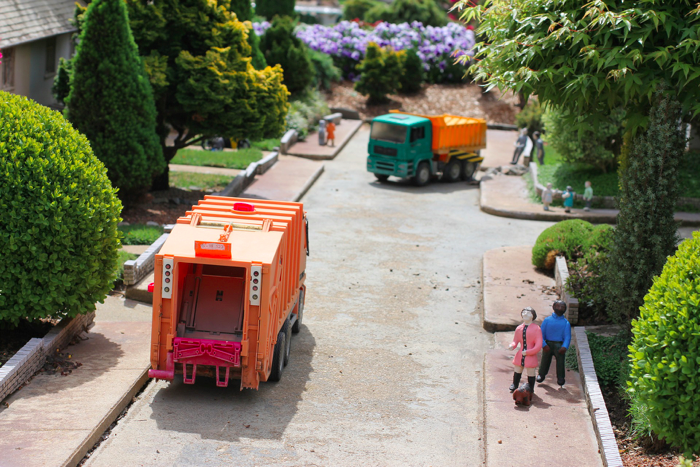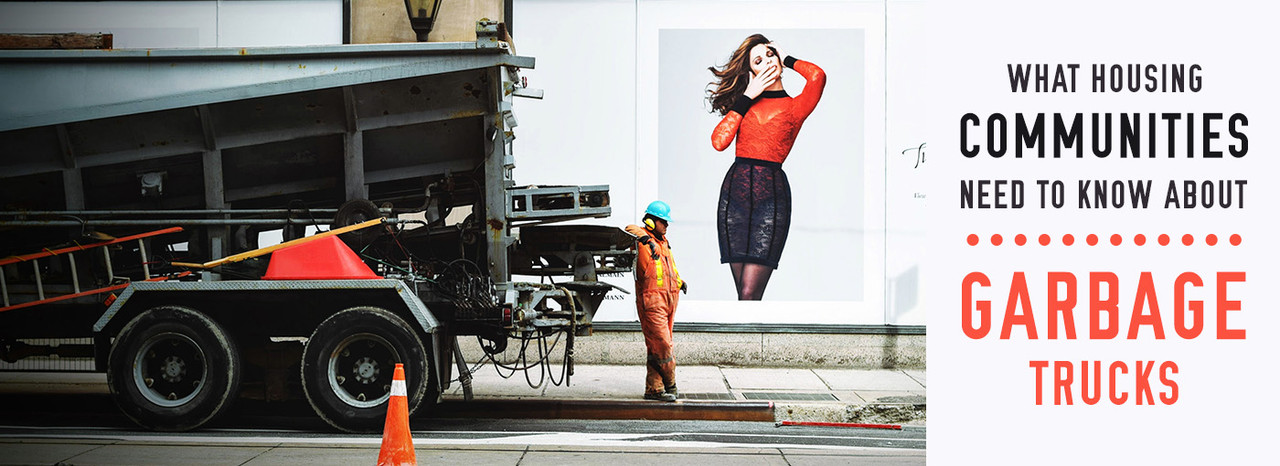Most modern-day American adults were brought up to be responsible global citizens. Sorting our trash comes naturally to us. We make sure not to mix our glass, aluminum, and paper when we place our trash out on the curb. We rinse out our food containers before placing them in the recycling bins. We utilize beverage container redemption in states that offer it. Some of us even compost our food waste. As a whole, we are more attuned to living “green” than either our parents or grandparents.
Green citizens that we are, it may be difficult and even shocking to learn that all of that effort is often negated by the trucks being used to collect our garbage and recycling. The United States utilizes over 179,000 solid waste collection trucks, and while this impressive fleet produces less than one-hundredth of the nation’s overall greenhouse emissions, it still contributes to pollution through tire wear, petroleum fuel consumption, and regular maintenance and repair. The average “non-green” garbage truck has a fuel economy rating of less than five miles per gallon, making trash haulers both economically and ecologically costly.
Finding an alternative to the heavy-duty fuel-guzzling hauler is not just important for the environment; it makes keen economic sense. Savings in fuel and repair costs would radically reduce the cost of municipal trash removal. However, in a time of tight municipal budgets, the argument to make such a large infrastructure upgrade may be an uphill battle.

Courtesy: Pixabay
The Problem with Garbage Trucks as We Know Them
Garbage trucks, in general, have two problems that make them ecological terrors. The first is that the nation’s waste collection fleet is old. Per one calculation, 91 percent of the fleet is composed of diesel-burners not built to current emission standards.
To fully understand why this is a problem, let’s do a mental experiment. Imagine that 91 percent of the nation’s waste collection fleet is doing its job for a year. During the course of that year, each vehicle travels about 25,000 miles. This would give us (25,000)(179,000)(0.91) = 4,072,250,000 diesel-fueled miles travelled per year by the fleet.
Research from the University of Nebraska-Lincoln found vehicle age to be the determining factor in waste production among similar waste disposal vehicles. The US Energy Information Administration (EIA) also estimates that burning a single gallon of diesel produces as much as 22.4 pounds of carbon dioxide. Based on these figures, the US waste disposal fleet releases more than 45 million tons of carbon dioxide into the atmosphere each year. That’s not accounting for other greenhouse gases, such as nitrous oxide and methane, or solid waste such as debris from tires.
Per the EPA, this is roughly the same carbon footprint as 10 million passenger cars.
The second major issue with garbage trucks is that, while a garbage truck and a long-haul truck look and behave almost nothing alike, federal regulations treat them similarly. Legally, a long-haul truck or its equivalent can only weigh 80,000 pounds, with 20,000 pounds being supported by each axle. These rules prevent excessive wear on the federal highways. While there are exceptions, and states are free to establish their own limits for state highway use, the 80,000 pounds rule is a standby in the truck manufacturing industry.
This becomes a problem when you consider that a waste truck, with its compacting and offloading equipment, is heavier empty than a long-haul truck. Because most waste trucks have an empty weight of about 33,000 pounds, and because a waste truck’s shorter wheelbase gives it a lower maximum legal weight (about 51,000 pounds), the average truck can legally only haul nine tons of waste — less than its maximum capacity. Fuel efficiency, brake energy recovery, or emission-control equipment onboard exacerbates the problem, actually leading to higher fuel consumption.
Tackling this issue will require a new approach.

Courtesy: Pixabay
Reimagining the Garbage Truck
One proposed method of resolving the garbage truck headache is to convert the fleet to all-electric vehicles. In Christchurch, New Zealand, the first electric waste collector in the Southern Hemisphere has already been placed into service. Battery-driven and powered in part by biofuel converted from landfill gas emissions, the truck is intended to be a better neighbor to the city’s residents.
“As an organisation, we aim to be carbon neutral by 2030,” says Ross Trotter, solid waste manager for Christchurch. “The electric rubbish truck service provided by our contractor, Waste Management, is another big step in the right direction towards our emissions goal following the Council’s switch to electric cars.
“The electric truck is also quieter, which will be much appreciated by city residents, particularly during early collections. It is also ideal for a predictable stop-start urban route as it recharges itself when it stops and starts to collect the wheelie bins.”
While it is debatable whether an electric vehicle powered by the public grid – which is fueled by coal and natural gases – is healthier for the environment than a carbon fuel-burning vehicle, the advent of landfill-derived liquid gases may make this a strong option. Technology has progressed to the point where landfill gases can be collected and condensed into a biofuel with equivalent properties to diesel or petroleum. This biofuel can be burned in current vehicles without the need of modification.
This renewable natural gas has the lowest carbon footprint of any available fuel. As this fuel is reclaimed from gases released by food waste, it may even qualify as carbon-negative, with its use preventing these greenhouse gases from escaping into the atmosphere. Grand Junction, Colorado, as well as the California cities of Sacramento, South San Francisco, Long Beach, and Orange County, are actively producing this renewable gas or have committed to its future use.
While the idea of replacing the entire fleet with hybrids may be a stretch, the installation of anaerobic decomposers in city landfills may well be within reach, allowing for the production of healthier, cheaper fuel for the waste trucks already in operation.
What Can Be Done Now
While we are waiting for this to happen, we as consumers can take steps to reduce the burden on our community trash trucks, reducing the pollution they produce. For example, we can:
- Take the time to properly sort recyclables.
- Compost food waste, or implement strategies to reduce the amount of food we throw away.
- Repair or donate used household goods and electronics.
- Use reusable shopping bags and actively work to minimize packaging waste.
- Redeem beverage containers, if applicable in your community.
A strong way to get started is by having the right receptacles. Trashcans Unlimited offers the best prices on commercial and decorative trashcans and is a trusted source for all your trash can needs.

